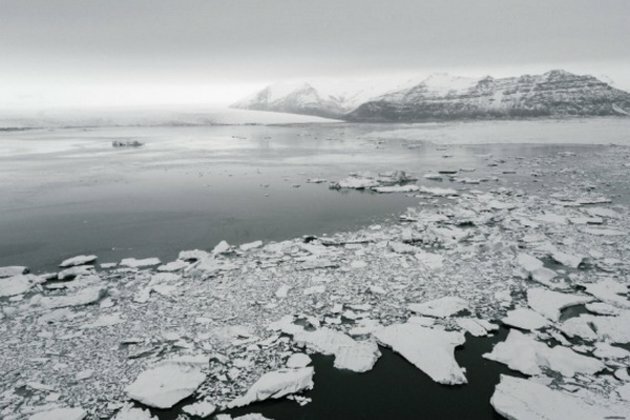Changing ocean currents are driving extreme winter weather, find researchers
ANI
21 Oct 2021, 22:48 GMT+10

Washington [US], October 21 (ANI): Throughout Earth's oceans runs a conveyor belt of water. Its churning is powered by differences in the water's temperature and saltiness, and weather patterns around the world are regulated by its activity.
A pair of researchers studied the Atlantic portion of this worldwide conveyor belt called the Atlantic Meridional Overturning Circulation, or AMOC, and found that winter weather in the United States critically depends on this conveyor belt-like system. As the AMOC slows because of climate change, the US will experience more extreme cold winter weather.
The study, published in the journal Communications Earth and Environment was led by Jianjun Yin, an associate professor in the University of Arizona Department of Geosciences and co-authored by Ming Zhao, a physical scientist at the National Oceanic and Atmospheric Administration's Geophysical Fluid Dynamics Laboratory.
AMOC works like this: Warm water travels north in the upper Atlantic Ocean and releases heat into the atmosphere at high latitudes. As the water cools, it becomes denser, which causes it to sink into the deep ocean where it flows back south.
"This circulation transports an enormous amount of heat northward in the ocean," Yin said. "The magnitude is on the order of 1 petawatts, or 10 to the 15 power watts. Right now, the energy consumption by the entire world is about 20 terawatts, or 10 to the 12 power watts. So, 1 petawatt is enough to run about 50 civilizations."But as the climate warms, so does the ocean surface. At the same time, the Greenland ice sheet experiences melting, which dumps more freshwater into the ocean. Both warming and freshening of the water can reduce surface water density and inhibit the sinking of the water, slowing the AMOC. If the AMOC slows, so does the northward heat transport.
This is important because the equator receives more energy from the sun than the poles. Both the atmosphere and ocean work to transport energy from low latitudes to high latitudes. If the ocean can't transport as much heat northward, then the atmosphere must instead transport more heat through more extreme weather processes at mid-latitudes. When the atmosphere moves heat northward, cold air is displaced from the poles and pushed to lower latitudes, reaching places as far south as the US southern border.
"Think of it as two highways connecting two big cities," Yin said. "If one is shut down, the other one gets more traffic. In the atmosphere, the traffic is the daily weather. So, if the ocean heat transport slows or shuts down, the weather becomes more extreme."Yin said the study was motivated by the extreme cold weather Texas experienced in February.
"In Houston, the daily temperature dropped to 40 degrees Fahrenheit below the normal," Yin said. "That's the typical range of a summer/winter temperature difference. It made Texas feel like the Arctic. This kind of extreme winter weather happened several times in the U.S. during recent years, so the scientific community has been working to understand the mechanism behind these extreme events."The crisis in Texas caused widespread and catastrophic power outages, and the National Oceanic and Atmospheric Administration estimated that socioeconomic damages totaled $20 billion. Yin was curious about the role the ocean played in the extreme weather event.
Yin and Zhao used a state-of-the-art, high-resolution global climate model to measure the influence of the AMOC on US extreme cold weather.
They ran the model twice, first looking at today's climate with a functioning AMOC. They then adjusted the model by inputting enough freshwater into the high-latitude North Atlantic to shut down the AMOC. The difference revealed the role of the AMOC in extremely cold weather. They found that without the AMOC and its northward heat transport, extremely cold winter weather intensifies in the US.
According to recent observational studies, the AMOC has weakened in the past decades. Climate models project it will get even weaker in response to increased greenhouse gases in the atmosphere.
"But there is uncertainty about the magnitude of the weakening because, at this point, we don't know exactly how much the Greenland ice sheet will melt," Yin said. "How much it melts depends on the greenhouse gas emissions."The researchers also didn't take into account in their model the effects of human-caused global warming, but that's an area of interest for the future, Yin said.
"We basically just turn off the AMOC (in the model) to look at the response by extreme weather. Next, we want to factor in the greenhouse gases and look at the combined effects of the AMOC slowdown and global warming on extreme cold weather," Yin concluded. (ANI) Share
Share
 Tweet
Tweet
 Share
Share
 Flip
Flip
 Email
Email
Watch latest videos
Subscribe and Follow
Get a daily dose of Tucson Post news through our daily email, its complimentary and keeps you fully up to date with world and business news as well.
News RELEASES
Publish news of your business, community or sports group, personnel appointments, major event and more by submitting a news release to Tucson Post.
More InformationBusiness
SectionVolkswagen to slash 1,600 jobs at Cariad by year-end
BERLIN, Germany: Volkswagen is set to cut 1,600 jobs at its Cariad software division by the end of the year, affecting nearly 30 percent...
Travel to and from Israel to be boosted by terminal reopening
The principal terminal, Terminal 1, at Israel's largest airport will reopen at the end of this month, having largely been closed since...
Tech stocks lead renewed selling on Wall Street
NEW YORK, New York - The knee-jerk introduction of trade tariffs by President Donald Trump continues to rattle markets with all the...
Ford to invest up to $4.8 billion to revive struggling German unit
FRANKFURT, Germany: Ford announced this week that it will inject up to $4.8 billion into its struggling German unit to stabilize its...
Boeing links worker bonuses to company-wide performance
SEATTLE, Washington: Boeing has revamped its employee incentive plan, tying annual bonuses for more than 100,000 workers to overall...
US, Canadian farmers face rising fertilizer costs amid trade tensions
WINNIPEG, Manitoba: Farmers in the U.S. and Canada are bracing for soaring fertilizer prices as trade tensions escalate between the...
Arizona
SectionNew Trump policy ends collective bargaining for 50,000 TSA officers
WASHINGTON, D.C.: The Trump administration announced this week that it will end collective bargaining rights for about 50,000 TSA officers...
Los Angeles, Pasadena sue Edison over devastating wildfire
LOS ANGELES, California: Los Angeles County, Pasadena, and other public agencies have sued Edison International and its subsidiary,...
Big 12 tournament roundup: Texas Tech survives Baylor's late rally
(Photo credit: William Purnell-Imagn Images) JT Toppin produced 26 points and 10 rebounds as No. 9 Texas Tech did just enough to...
Arizona KOs Kansas to reach Big 12 semifinals
(Photo credit: William Purnell-Imagn Images) KANSAS CITY, Mo. - Henri Veesaar and KJ Lewis each scored 19 points to lead Arizona...
No. 9 Texas Tech survives late push by Baylor at Big 12 tourney
(Photo credit: William Purnell-Imagn Images) JT Toppin hit for 26 points and took 10 rebounds as No. 9 Texas Tech did just enough...
Rockets put win streak up against defense-challenged Mavericks
(Photo credit: Troy Taormina-Imagn Images) With veteran point guard Fred VanVleet playing for just the second time since an ankle...













